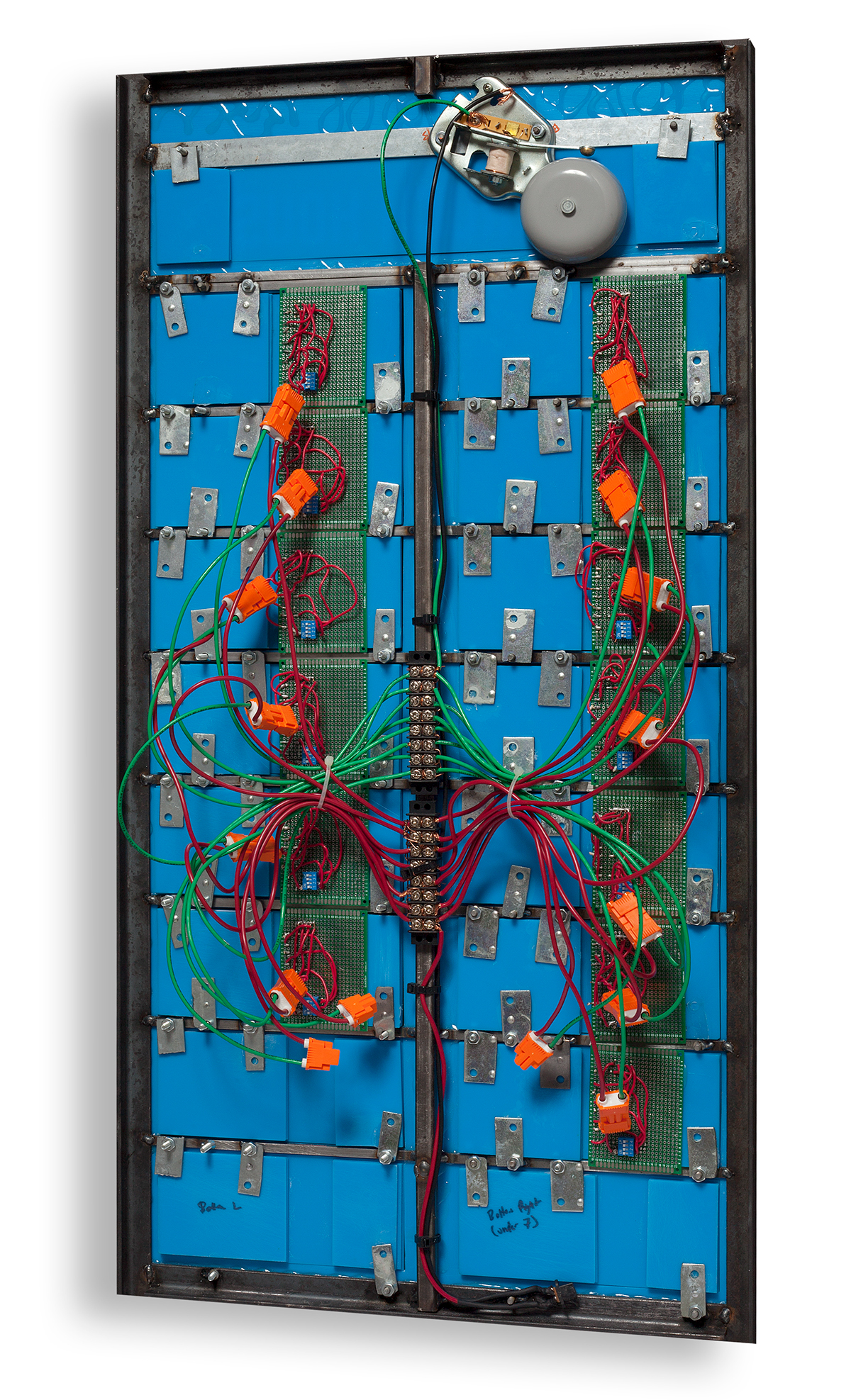NYCHA Village Buzzers
There are 326 public housing developments in New York City, providing affordable housing for an estimated 600,000 New Yorkers.






The user experience in in NYC housing projects is pretty dismal, geared to fit the needs of a wide array of buildings and large population while working within a limited budget.

One small aspect of The Projects that could really use some love is the apartment buzzers. These, of course, are the units that allow visitors to ring an apartment in the building and be "buzzed" through the front door for entry.

the current buzzers for The Baruch Houses, a housing development on the Lower East Side with 13 floors of apartments.
The current buzzers have many problems. First, they are just plain ugly to look at, the stainless steel feeling institutional and cold. They are also very impersonal, and the fact that residents are represented by numbers and "codes" strips them of all identity, missing an important opportunity to help create a sense of community and pride within the building. From a functional standpoint, they are hard to use. The visitor must first read the "instructions," then browse a registry with a total lack of hierarchy to find the apartment they want to ring. Then they have to enter a code into a pin pad, forcing them to either quickly memorize a number or glance back and forth like a maniac.
My goal in redesigning the buzzer was first to make it more visually appealing, by cleaning up the look and organizing some of the information it holds into more cohesive sections. I also thought it would improve the experience for both visitor and resident if each apartment was allowed its own button, and help foster a sense of community if each apartment was able to display a name by their button.

redesign of the buzzers for The Baruch Houses on the Lower East Side.
The redesign, named the Village Buzzer, is broken up floor by floor. If someones wants to buzz apartment 4A, they quickly locate the large 4 and press the button next to the letter A. No more hunting for codes. As you can see, also included is a panel that shows each resident’s name next to their button. If a resident wishes to be anonymous, they can list themselves as “NYCHA Resident.” They can also use nicknames if they choose to personalize thier identity.
One function of the original design is its ability to be programmed to fit any of the 326 housing projects in New York City, a major feat since each development is different and has a different amount of floors.
You'll notice each set of of buttons is contained within a box. That's because the Village Buzzer is made up of "floor modules." Construction of any Village Buzzer consists of an empty, pre-wired "body," with 17 slots: one to display the name of the housing development, and 16 to accommodate floors of the building. Modules are ordered to fill the needs of each building, with numbered modules for every floor and blank modules to fill empty slots in the buzzer body for buildings with less than 16 floors.


empty body on left, on the right, floor modules, blank modules, and nameplate modules.
A removable paper card slides in and out of each floor module and is printed to display resident names. For buildings with less than 5 apartments per floor, a dip switch on the rear can deactivated buttons, a the name card will be printed with a blank area next to any deactivated button.
Assembly is very simple and only requires use of an 8mm nut driver. Each module is prewired and simply plugs in to the wiring harness of the empty body.

assembly is simple, both body and floor modules are pre-wired and simply plug into the the main harness.
Because of this modular construction, the Village Buzzer can be applied to any of the 326 developments in the city, and is able to allow all the apartments within to display resident names, rather than a number.

a few examples of Village Buzzer application.


